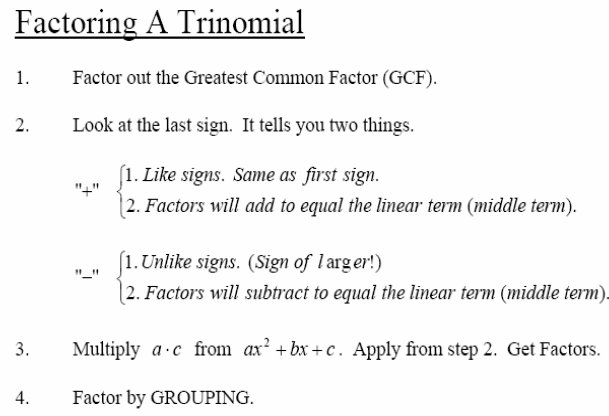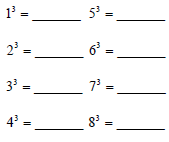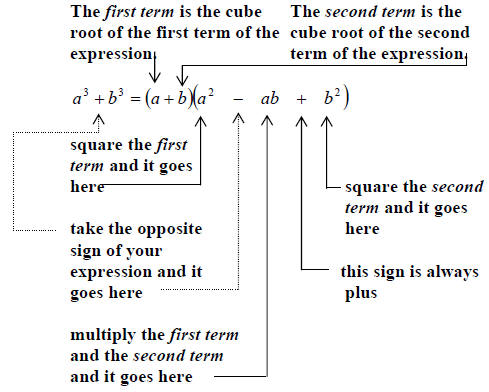FACTORING POLYNOMIALS
I. OBJECTIVES
At the conclusion of this lesson you should be able to:
1. Factor trinomials .
2. Factor the difference of perfect squares .
3. Factor the sum and difference of perfect cubes .
4. Factor one ntial-equations/holt-answer-keys-algebra.html">algebraic ex pressions containing fractional and negative exponents
II. PROCEDURE
Put DVD 1 in and select Section P5. While watching the DVD, fol low this study
guide and take notes in the study guide as if you were sitting in a classroom.
Stop
or pause the DVD as needed to catch up or copy something down.
Factor the Greatest Common Factor (GCF)
Turn in your textbook to page 66.
Problem #4.

Turn in your textbook to page 66.
Problem #8.

Factor by Grouping
Turn in your textbook to page 66.
Problem #14.

Factoring a Trinomial

Turn in your textbook to page 66.
Problem #24.

Turn in your textbook to page 66.
Problem #68.

Turn in your textbook to page 66.
Problem #28.

Difference of Two Perfect Squares

Turn in your textbook to page 66.
Problem #44.

Sum of Two Perfect Squares

Turn in your textbook to page 66.
Problem #48.

Turn in your textbook to page 66.
Problem #66.

Sum and Difference of Perfect Cubes



Turn in your textbook to page 66.
Problem #64.

Turn in your textbook to page 66.
Problem #60.

Turn in your textbook to page 66.
Problem #94.


Turn in your textbook to page 66.
Problem #96.

Turn in your textbook to page 66.
Problem #100.

STEPS FOR FACTORING
Step 1---Look for common factors (The Greatest Common Factor)
Step 2---Count the number of terms and factor accordingly
a. Two terms
•Sum of Squares  prime
prime
•Difference of Squares 
•Sum of Cubes 

•Difference of Cubes 
apply the rules for sum of cubes
b. Three terms—Use the “AC (Grouping) Method” or “Trial and Error”
| SIGNS FOR FACTORING | ||
| MIDDLE TERM | LAST TERM | SIGNS |
| + ( positive ) | + | both + |
| - (negative) | + | both - |
| + (positive) | - | one +, one – larger + |
| - (negative) | - | one +, one – larger - |
c. Four terms – factor by grouping
Group by pairs , factor out common factors.
| Prev | Next |
